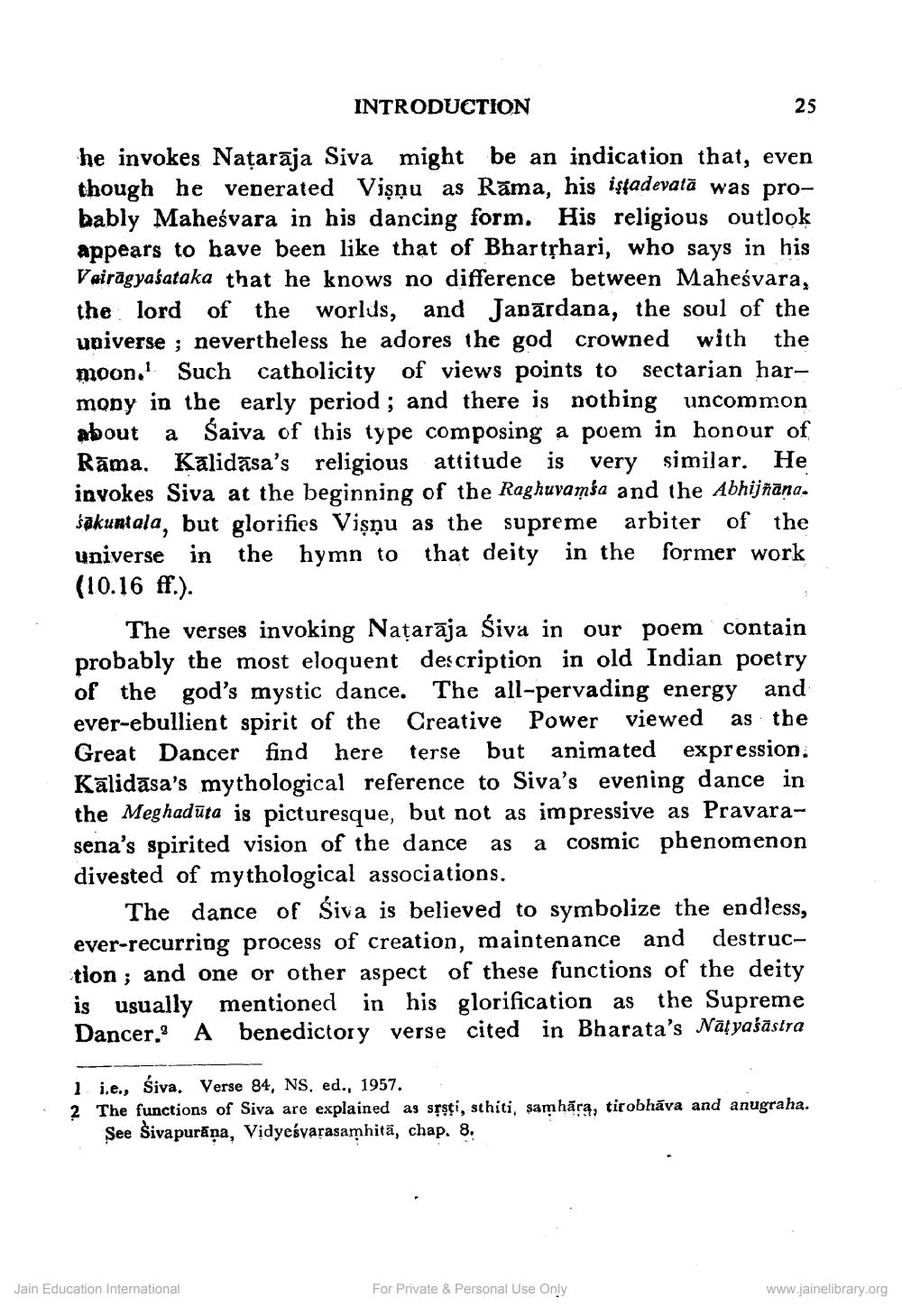________________
INTRODUCTION
25
he invokes Națarāja Siva might be an indication that, even though he venerated Vişņu as Rāma, his isfadevatā was probably Maheśvara in his dancing form. His religious outlook appears to have been like that of Bhartshari, who says in his Vairāgyaśataka that he knows no difference between Maheśvara, the lord of the worlds, and Japārdana, the soul of the universe ; nevertheless he adores the god crowned with the moon.'Such catholicity of views points to sectarian harmony in the early period; and there is nothing uncommon about a Saiva of this type composing a poem in honour of Rāma. Kalidasa's religious attitude is very similar. He invokes Siva at the beginning of the Raghuvamsa and the Abhijñāna. šakuntala, but glorifies Vişņu as the supreme arbiter of the universe in the hymn to that deity in the former work (10.16 ff.).
The verses invoking Națarāja Śiva in our poem contain probably the most eloquent description in old Indian poetry of the god's mystic dance. The all-pervading energy and ever-ebullient spirit of the Creative Power viewed as the Great Dancer find here tersebut animated expression. Kālidāsa's mythological reference to Siva's evening dance in the Meghadūta is picturesque, but not as impressive as Pravarasena's spirited vision of the dance as a cosmic phenomenon divested of mythological associations.
The dance of Śiva is believed to symbolize the endless, ever-recurring process of creation, maintenance and destruction; and one or other aspect of these functions of the deity is usually mentioned in his glorification as the Supreme Dancer. A benedictory verse cited in Bharata's Natyaśāstra
•
1 i.e., Śiva. Verse 84, NS, ed., 1957. 2 The functions of Siva are explained as srsti, sthiti, samhāra, tirobhāva and anugraha.
See Šivapurāņa, Vidyeśvarasamhitā, chap. 8.
Jain Education International
For Private & Personal Use Only
www.jainelibrary.org




